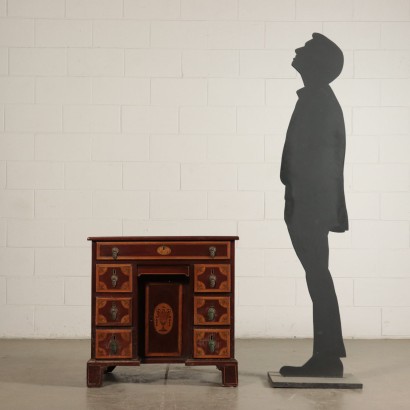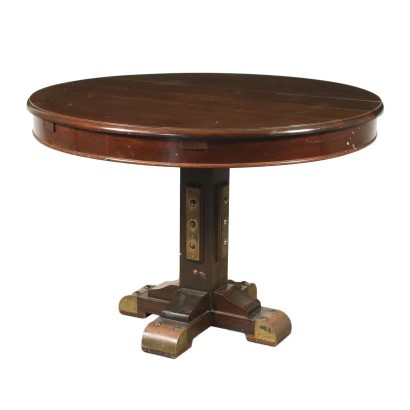Regency Desk Marple and Mahogany England 19th Century
Features
Style: Regency (1811-1830)
Age: 19th Century / 1801 - 1900
Origin: England
Main essence: Maple , Mahogany
Description
Small Regency desk; it has eight drawers on the front and a hidden door in the open compartment. It has marple reserves inlaid with various essences.
Product Condition:
The item shows signs of wear due to age. Any damage or loss is displayed as completely as possible in the pictures. It may require restoration and recovery of french polish.
Dimensions (cm):
Height: 74
Width: 75
Depth: 44,5
Additional Information
Style: Regency (1811-1830)
The Regency style, named for the regency (1811-1820) of Prince George of Wales, later crowned as George IV, King of England (1820-1830).The forms became heavier, larger and more ornate.
Often enriched with a taste that is increasingly attentive to exotic Turkish, Indian and Egyptian stylistic themes.
An elegant Regency mirror
FineArt: Pair of Blue John Regency mugs, England, first quarter of the 19th century < / a>
FineArt: Pair of urn vases Blue John Regency, England, first fourth 19th century
FineArt: Regency porcelain inkwell, England, c. 1820
FineArt: Regency chandelier, England, c. 1820
Age: 19th Century / 1801 - 1900
19th Century / 1801 - 1900Main essence:
Maple
Hard, light wood used for inlays. It grows mainly in Austria, but it is widespread throughout the northern hemisphere, from Japan to North America, passing through China and Europe. It is one of the lightest woods ever, tending to white, it is similar to lime or birch wood. The briar is used in the production of ancient secretaires .Mahogany
It is one of the most precious and sought-after woods in cabinet making. It was discovered in Central America around 1600 and began to be imported to England in the 1700s. Much appreciated for its hardness and indestructibility, it became widespread following the blocking of walnut exports from France in 1720 and the consequent elimination of English import duties on mahogany from the colonies in America and India. The most valuable version comes from Cuba, but it became very expensive. At the end of the 18th century it began to be used also in France in Louis XVI, Directory and Empire furniture, its diffusion declined starting from when Napoleon, in 1810, forbade its import. It was generally used in the manufacture of elegant furniture, due to its characteristics and beautiful grain. Alternative proposals
































